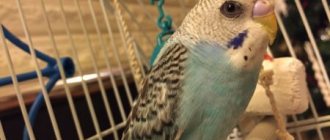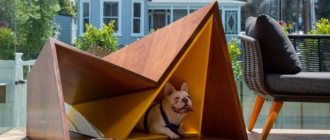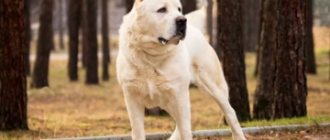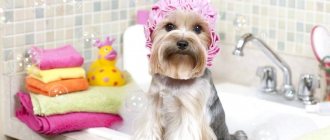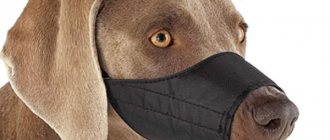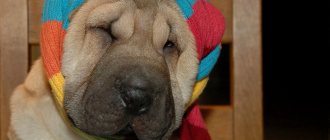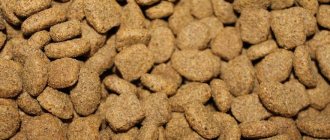The Labrador is a strong, powerful dog with a wide chest, short loin and thick paws.
The full name of the breed is Labrador Retriever, ideal height is 54-57 cm, weight is 30-40 kg.
Life expectancy is 10-14 years.
The most common colors: black, chocolate, brown, fawn, golden, sometimes red and gray.
Why do you need a booth?
Of course, the most obvious and understandable answer: to hide from bad weather and cold. Indeed, being in a well-insulated and well-made booth, the dog can easily endure frost, wind, and rain without risking its health and feeling as comfortable as possible.
However, some owners even build kennels for dogs living in apartments or private houses, and not on the street. What is this – excessive concern or a completely rational approach? This is actually a very smart decision. After all, a booth is not only a shelter from bad weather. This is also the dog’s personal corner, in which he will feel as safe as possible. Just as a person should have his own room in an apartment, or at least a corner that he could feel like his own and arrange according to his own wishes, so a dog should have a kennel.
This is especially important in cases where you do not want your dog to sleep on the bed with you, and also do not allow you to jump onto a chair or sofa, believing that it should sleep on the floor, on a special bedding. Just in this case, having a booth will not be superfluous at all. It creates the illusion of greater security for the dog, which means your pet will feel more comfortable throughout its life.
Of course, if you are building a kennel in a house, it can be assembled from thin plywood or other simple materials - you don’t have to think about additional insulation or even installing a floor.
Determining the optimal sizes
The next very important step is to correctly determine the size of the doghouse for your Labrador. This is really serious. If the booth is too large, it will be cold in it - it will be difficult to heat an overly spacious room with body heat. And a dog simply won’t be able to fit into something that’s too small.
Experts recommend determining the appropriate kennel size for a Labrador Retriever based on its size. To do this, simple measurements and calculations are made.
First of all, you need to decide on the height. To do this, measure the height of the dog at the withers. Add about 15 centimeters to this so that the dog can sit in the booth if desired. If you plan to use thick bedding to make your pet warmer and more comfortable, then add its thickness to the height.
The next step when choosing the size of a dog house for your Labrador dog is determining the depth. Here you need to measure the distance from the tips of the front paws to the withers. Add another 15 centimeters here and get the optimal figure.
When determining width, measure the dog from the base of the tail to the tip of the nose. Then your pet will be able to easily turn around inside the booth without experiencing the slightest discomfort.
Finally, when determining the size of the booth for the Labrador Retriever, a photo of which is in the article, you need to decide on the entrance. Its width should be 9 centimeters greater than the height of the dog at the withers, and its height should be 9 centimeters less.
Here it is worth saying that all the dimensions of the booth for an adult Labrador are given. But it is advisable to accustom him to life in a kennel from puppyhood. Some owners allow their pets to live in the house while they are puppies, and when they grow up, they move them to a kennel outside. It would seem a rational approach. However, the dog does not understand this, perceiving it as a terrible punishment. She cannot understand why she angered the owners who expelled her from a cozy, spacious house, where there is a lot of tasty food and you can always play with someone or at least sleep in the chair of your beloved owner. Therefore, it is better to immediately accustom your pet to the booth, so as not to upset him again.
Is it possible to keep a Labrador in an enclosure?
To begin with, we should consider this very question. You, as an owner, must understand that each dog breed has its own characteristics. We have already mentioned that Labradors are family members who usually live at home. They are very attached to their owner and cannot live without him. Frankly speaking, keeping a retriever in an enclosure is not the best idea. He will not serve as a guard, but after living in such an environment you will lose the retriever as a breed. His character will be completely different. Shepherd dogs, for example, or the same Rottweilers, are created for such a life.
If you have the opportunity to keep a Labrador at home, you better take advantage of it. When this is not possible, you need to know the rules for keeping a Labrador outdoors, creating comfortable conditions for your pet. First, you need to remember that Labradors are inquisitive animals. Therefore, the enclosure for them should be spacious and located in a place where everything can be seen. Secondly, the enclosure must have a booth, preferably insulated, so that the dog does not freeze in winter. Thirdly, no chains for the retriever! An enclosure is enough in which the pet will not cause inconvenience to you and your neighbors by wandering around the territory.
Note! As a conscientious owner, you are expected to remember to feed your dog. Keep track of the amount of water for her. After all, when she is in an enclosure, she will not be able to remind you of her needs.
Another point that is very important is communication between household members and the dog. When she is in an enclosure, this does not mean that now no one should play with her. On the contrary, she needs even more attention to keep the Labrador friendly and peaceful. The dog is bored, so the owners are required to satisfy its needs. Walk with her outside the yard, let her play with the children in the yard, and often go into the enclosure yourself. There were cases when pets, who had not been taught to go beyond their own yard since childhood, were frightened by the noise of the streets and traffic and were afraid to walk in the parks. This is why spending time with your dog is so important. Only then will the keeping of the Labrador retriever be correct.
We select suitable materials
So, what materials are useful when making a booth?
First of all, you need to stock up on wood: bars with a section of 4 x 4 centimeters, plywood (or clapboard) and floorboards. It also doesn’t hurt to stock up on roofing felt, tarpaulin, and polystyrene foam. For assembly, it is advisable to use short but thick screws. They securely fix the wood and do not stick out inside the kennel, which could cause injury to the dog.
The tools you will need are: a screwdriver, a saw, a measuring ruler or meter and a pencil - perhaps everything you need can be found in any household.
With everything you need at hand, you can safely get to work.
Adviсe
When a home is made with your own hands, the work is not over. A dog's home requires proper care. Cleaning should be regular, about once or twice a month, at least. During cold seasons, cleaning should be done once a season. When cleaning the home, leftover food, bones and other unnecessary attributes are removed. The room is treated from the inside with preparations that disinfect and protect against parasites. After treatment, the pet should remain outside the booth until all treated walls are dry.
How to insulate a booth?
Long before building the booth, you should decide how exactly you will insulate it. After all, it is advisable to insulate not only the walls, but also the bottom, as well as the roof. This is really important. Everyone knows that heat rises, which means that a lot of heat will be lost through the roof. If you eliminate the smallest cracks and insulate the roof, then heat will accumulate in the kennel, and the dog will always be comfortable here.
The bottom is also very important - the dog lies on the floor, and if it is cold, then the pet will not be able to warm up. The easiest way is to install the booth on several thick blocks so that the bottom does not come into contact with the frozen ground. As additional thermal insulation, a foam plastic plate can be placed under the booth.
It is best to insulate the walls with sawdust or a thin layer of polystyrene foam - we’ll talk about this a little later.
Finally, when you have decided on the size of the Labrador doghouse, a photo of which can be seen in the article, think about insulating the entrance. Caring owners cover the entrance with a piece of tarpaulin. And so that the wind cannot lift the tarpaulin, special pockets are sewn onto its lower part, filling them with sand. The dog will easily push away such a curtain with his nose and will definitely not get hurt by it. And the wind, no matter how wild it is, is unlikely to cause much discomfort to your pet. In the summer heat, the curtain can be removed so that the kennel does not become too stuffy.
Choosing a roof type
After calculating the size of the Labrador doghouse, you also need to decide on the type of roof. There can be two options: gable and flat. Each of the designs has certain advantages, so making a choice is not always easy.
Let's start with the flat one - it is the easiest to make. Therefore, many dog owners prefer it. In addition, dogs love to climb onto the roof of the booth and inspect their possessions from it, getting a greater overview. But it is worth remembering that a flat roof should be sloped so that water after rain or melting snow would rather roll down from it, rather than seep through the smallest cracks inside the booth.
The next option is gable. It is the most beautiful, but at the same time quite difficult to manufacture. In addition, not only rain, but also snow quickly drains or slides off such a roof, without causing unnecessary problems for the dog and the owner. In this case, you should make sure that there is a drainage ditch around the booth that drains excess water away, so as not to carry excess slush.
With this information, each dog owner will be able to decide which option is more suitable specifically for him.
Photo gallery
As you can see in the photographs, building or ordering housing on the Internet for your faithful friend is not at all difficult. The main thing is to decide on the design and take into account all sizes.
Where should I install it?
Once you have decided on the choice of design and selection of materials, it is very important to decide where exactly the booth will be installed. This is also an important factor. After all, not only the dog’s comfort, but also its ability to guard the territory depends on the chosen place.
Traditionally, the booth is located near a gate or gate. Thanks to this, the dog sees every person entering the owner’s territory. And can take appropriate measures. And strangers, seeing a large and determined dog near the gate, will once again think about whether it’s worth going in on their own or whether it would be better to wait for the owner to talk to him without entering someone else’s property.
However, you can use special fittings or a thick steel wire to which the chain is attached. This allows the dog to move freely along the entire fence - 10, 20 or even 100 meters. Very convenient. On the one hand, the booth can be placed anywhere, because the dog can easily reach it if the length of the chain allows. On the other hand, the risk of unwanted guests entering the site who decide not to use the gate, but simply climb over the fence, is reduced.
However, it’s worth keeping in mind that Labradors are generally very peaceful and friendly dogs. They are good companions and will make great playmates or walking companions. But they turn out to be good guards much less often. Simply because they want to be friends with the whole world, and not bark at strangers, much less bite them.
Finally, having determined what size kennel will be optimal for your Labrador, choose a place where the cozy house will be not only functional, but also comfortable. That is, on the one hand, the dog should have the opportunity to sit in the sun - on cold winter days this will be quite useful. On the other hand, there must be a shadow nearby. Here your pet will hide from the scorching summer sun in the heat. However, you can simply choose a place at random, and in the summer erect a small canopy that creates the shade your pet needs.
Premises requirements
It should be spacious and warm.
This could be a shed with windows, a heated garage, an attic or a purpose built building. They create conditions for the birds that are close to natural in temperature and light. Indoor humidity is about 70%. Parrots can live in fairly cold rooms, but there should not be sudden temperature changes. Some species can withstand frost up to 10 degrees. Drafts have a detrimental effect on them.
Some medium (wavy) ones can reproduce in small cells.
New Zealand kakariki breed only in an aviary. One enclosure is needed per couple at this time. There should be no holes in it that he instantly finds.
The enclosure where Rosella lives must be at least 4 m long, because it loves to fly.
Song parrots are unpretentious to conditions. Their maintenance and breeding differs in that only one pair can be kept in one room. Otherwise they will fight.
Large parrots are bred in enclosures.
To breed Alexandrine parrots, you need an aviary with a side of at least 2 m.
Provides for daily cleaning of the premises.
Making the bottom
Having determined the appropriate dimensions of the booth for your Labrador, try to make it yourself. It all starts, of course, from the bottom. First, assemble the frame frame - four bars of suitable length are simply connected to each other. The easiest way to do this is with self-tapping screws. But you can also use special corners that increase the strength of the connection. If your pet is large in size and weight, it would be a good idea to add one or two bars in the middle of the structure, increasing its strength.
Then there may be several options. For example, you can simply attach floorboards to the frame, which will act as a floor. And you can use not only boards, but also additional insulation. In this case, after installing the boards, turn the frame over, fill the void between the bars with foam boards, cover it with plywood and secure it with self-tapping screws. Now the floor of the booth will not only be durable, but also very warm.
Working on the walls
The next stage is making the walls. To begin with, the frame is traditionally assembled - for this, use the same bars. But they should be fixed to the bottom frame with longer screws. Better yet, use reliable corners. Then the rigidity of the structure will be maximum. At the same time, remember that on one side the bars should be higher, and the upper end should be cut at an angle - this will ensure a tight fit of the roof and at the same time guarantee the desired angle of the roof slope.
Now you need to line the inside walls with plywood or clapboard. The latter option is preferable - there will be no splinters here, which means that your pet will be much more comfortable living in the booth. Before covering the outside (here plywood can be used as a cheaper material), additional thermal insulation can be provided. The gap between the inner and outer cladding can be filled with suitable material - foam boards or ordinary small sawdust.
The casing should be secured with short self-tapping screws. Make sure that the caps are tightly recessed, but that the sharp ends of the screws do not stick out inside.
Assembling the roof
Assembling the roof is the final stage of construction. For example, consider a flat or pitched roof, as it is easier to manufacture.
First, a frame is assembled from a block - its dimensions will be exactly the same as those of the bottom. Fasten it to the bars that form the frame of the walls. The task is not difficult - the main thing is that the screws do not go crooked and do not go inside the booth.
A piece of roofing felt or thick construction polyethylene is laid on top of the frame. This eliminates the possibility of rain or melt water leaking into the kennel, which means the pet will feel as comfortable as possible. If necessary, before laying waterproofing, you can use polystyrene foam, insulating the roof at the same time.
The last stage is laying the roof itself. Here you can use plywood or OSB board. The main thing is to make sure that it is strong enough to withstand the weight of your pet. In some cases, it makes sense to cut two sheets of the same size and connect them together, getting a really durable surface. The roof area can be larger than the kennel itself in order to reliably protect the dog from direct and slanting rain. And it will be much more pleasant for your pet to sit on a large roof than on a small one.
This completes the construction. Now you know how to make your own doghouse for a Labrador. The photos attached to the article will certainly help at different stages.
Construction of an aviary
So, when you know how to properly care for your pet, you can start creating an enclosure with your own hands. The first thing you have to do is choose a place for construction. Ideally, build a pen in the corner of your yard. From there, the Labrador will watch what is happening, and it won’t interfere with the others.
Now let's talk about the walls of the enclosure. There are two types of enclosure walls:
- deaf;
- lattice.
The name itself already speaks about each of the species. The first version of the walls will protect your pet from bad weather: scorching sun, wind and precipitation. But, it prevents the retriever from observing what is happening. And this is already bad for him. Ideally, use a lattice wall so that the dog can control what is happening and not get bored. And there will be more sunlight in the booth. But what should a pet do in winter or in the heat? Where should he go? For this case, there is a booth in the enclosure, which we will talk about later.
The design itself can be made in different ways. Some people simply buy a ready-made metal enclosure, which just needs to be installed in its place. Others make it from the same metal or wood. To do this, wooden or metal posts are dug into the ground, and a mesh is stretched between them or rods are made. The main thing is that the Labrador does not penetrate outside through them. Which option to choose is up to you to decide.
Note! The support pillars themselves need to be dug to a depth of at least 0.7 m, but the mesh or rods need to be dug to a depth of 30-40 cm. This is done so that the dog does not dig under the ground. She's smart, she can understand what's what.
As for the dog enclosure door, it should be made of lattice on the wall and have a tight lock on the outside. You can’t do it on a blank wall, because there is a rule that says that when entering the enclosure, the dog needs to see the person, and the person needs to see the dog.
The roof of the enclosure is no less important. It will protect the Labrador from precipitation. There are no special requirements for it. The main thing is that it doesn’t leak. It can be made from the simplest and cheapest materials. You can use the following roofing materials:
- Slate.
- Soft roofing (ondulin, roofing felt, bitumen shingles).
- Profiled sheeting.
Ideally, make it on a slope, pointing towards the drain. Then precipitation will not accumulate near the Labrador’s home. Here are some other rules to consider:
- It is good if the enclosure is located near trees or bushes, which will become a barrier for the dog from the sun and wind;
- The size of the enclosure is also important. It depends on the size of the dog itself. Most often, a Labrador has 55-57 cm at the withers. Accordingly, the optimal enclosure for him will be a structure with an area of 8 m2;
Since dogs like to stand on their hind legs and rest against the wall, the height of the enclosure should be enough so that the pet in this position does not touch the ceiling with its head. It is also important to take into account that cleaning will be required inside. And it’s not entirely convenient for the owner to do this on all fours. We need to build on this as well.
Now that the enclosure is ready, you can take care of its arrangement.
